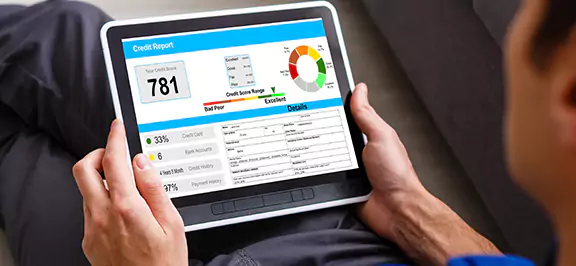So you know your credit score is important, but do you really understand what goes into that number? Your credit report contains a wealth of information that determines your score, from how often you make payments on time to how much debt you currently have. But reading the pages of your credit report can feel overwhelming. This blog post discusses the essential sections step-by-step so you can fully comprehend the factors impacting your score.
Learn what information lenders and creditors analyze to take control of your credit health. Understanding your credit report is the first step to improving it over time through smart money management. Equipped with the knowledge from this piece, you’ll be able to make sense of this important document.
What is a Credit Report and Why it Matters
Your personal credit report provides a snapshot of your credit history and is used by lenders to determine your creditworthiness. It includes information like your payment history, amounts owed, length of your credit history, new credit, and types of credit used.
Payment History
Your payment history shows whether or not you’ve paid bills on time. Late payments severely hurt your score while a solid record of on-time payments helps. Start automatic payments to avoid missing due dates.
Amounts Owed
This section shows your credit utilization ratio, or how much you owe compared to your limits. Keep balances low relative to limits, ideally below 30% of your credit limit. High balances hurt your score the most. Pay high balances whenever possible.
Length of Credit History
A longer credit history is better since it shows you can responsibly use credit over time. Your history spans the date of your oldest account opening to now. Don’t close old accounts just because you don’t use them anymore. Keep them open to benefit from the long history.
Types of Credit Used
Lenders like a mixture of installment loans (like mortgages), revolving credit (like credit cards), and financing (such as auto loans). A good mixture of credit shows you can handle different types of debt responsibly.
Your credit report and score determine your access to credit and loans. Monitor your reports regularly, check for errors, and take steps to improve or maintain a good score. With time and effort, you can achieve a solid credit profile.
How to Obtain Your Credit Report
Step 1 to understanding your credit is reviewing your credit reports. There are some major credit reporting agencies—Equifax, Experian, and TransUnion—that maintain reports on your credit history. You’re going to want to get reports from all three since they don’t always have the exact same information.
Requesting your free annual credit reports
Some good news is you’re entitled to one free credit report from each bureau every 12 months. The best way to request them is on AnnualCreditReport.com, the official site authorized by the credit bureaus. Provide some personal information to verify your identity, but the reports themselves are free and using this site is the only way to get them without paying a fee.
Checking errors
Errors on your credit reports are unfortunately common, so scrutinize them closely. Mistakes like incorrect late payments or amounts owed can negatively impact your score. If you spot any errors, file a dispute with the credit bureau to get them corrected. Provide documentation that proves the mistake. The bureau investigates and update or remove incorrect items. It also prevents things such as identity theft from going unnoticed
Monitoring your credit and checking reports regularly is one of the best ways to maintain good credit. Staying on top of your reports and scores helps you catch issues early and take action to resolve them. Now that you know how to access your free credit reports, take advantage of them and check up on your credit health often.
Understanding the Sections of Your Credit Report
Your credit report contains a lot of information about your financial history and creditworthiness. It’s made up of several sections, each focused on a different aspect of your credit.
Personal Information
This section lists basic details about you like your name, address, your Social Security number, and date of birth. Check that all the information here is accurate. Errors like an incorrect name or address can negatively impact your credit.
Credit History
The most significant section of your credit report shows your accounts, such as credit cards, auto loans, and mortgages. It lists the date you opened each account, your credit limit or loan amount, the account balance, and your payment history. Look for any errors here, like accounts that don’t belong to you or incorrect balances. Dispute them with the credit bureau to get them corrected.
Public Records
Public records like bankruptcies, foreclosures, lawsuits, and liens are included in this section. Make sure any public records listed actually apply to you and that the details about them are correct. If something is listed in error, file a dispute to have it removed.
Credit Inquiries
Whenever someone accesses your credit report, it’s recorded as an “inquiry.” Hard inquiries, like those from a credit card application, could lower your score slightly. Check that only inquiries you recognize and authorized are listed. If there are unrecognized inquiries, it could indicate identity theft, so take action to resolve it.
Monitoring each section of your credit report regularly is key to maintaining good credit and financial security. Be on the lookout for any incorrect information or signs of fraud so you can get issues resolved quickly. Keeping tabs on your credit history and taking action when needed will help you achieve and maintain a healthy credit score over time.

Improving Your Credit Score
To improve your credit score, the first thing you need to do is check your credit report. Request a free copy of your credit report from one of the three major credit bureaus—Equifax, Experian, and TransUnion. Review the report for any errors like accounts that don’t belong to you or incorrect account balances. Dispute these errors with the credit bureau to get them corrected.
Pay Balances
Pay down balances on credit cards and other revolving credit accounts like store cards. Keep your balances low relative to your credit limits. High balances hurt your credit utilization ratio—the percentage of your available credit that you’re using—which makes up 30% of your credit score. Pay off at least the minimums on time every month to avoid late fees and penalties.
Limit Applications
As mentioned, applying for too many credit accounts quickly lowers credit scores. Make sure to only apply for new credit when needed.
Check Limits
Ask your credit card companies to increase your credit limits. Higher limits will improve your credit utilization ratio as long as you keep low balances relative to the new limits. Make sure any credit limit increases are reported to the credit bureaus so they are reflected in your credit reports and scores.
Become an Authorized User
Ask someone with good credit to add you as an authorized user on one of their credit card accounts. Their responsible credit use will be reported on your credit reports, helping to build your own credit history over time. Make sure the account is reported to the credit bureaus in your name as well for maximum benefit.
Improving your credit score takes time and discipline. Check your credit scores regularly to monitor your progress. Over time, by following these tips, you’re going to establish a strong payment history.
No Credit Score Needed to Receive a FREE Phone!
If you’re reading this blog, you’re likely facing some sort of financial or credit score-related struggle. Luckily, EASY Wireless is here to offer some exciting benefits that don’t require good credit whatsoever!
Partnering with programs such as Lifeline, we’re offering FREE phones with data to eligible individuals just like yourself. Whether you need to keep in touch with friends & family or you want to just save money on your current plan, here’s what we’re offering:
EASY Wireless Unlimited Plan
- FREE Unlimited Data
- FREE Unlimited Talk
- FREE Unlimited Text
- FREE SIM Card Kit and Activation
- Choose to Keep Your Number or Get a New One
To start with EASY Wireless, apply on website by clicking below:
See if you are eligible for FREE cell phone service, Click here!
Or you can come to one of the EASY Wireless’s retail stores, where our customer service agent will help you apply for your benefits.


